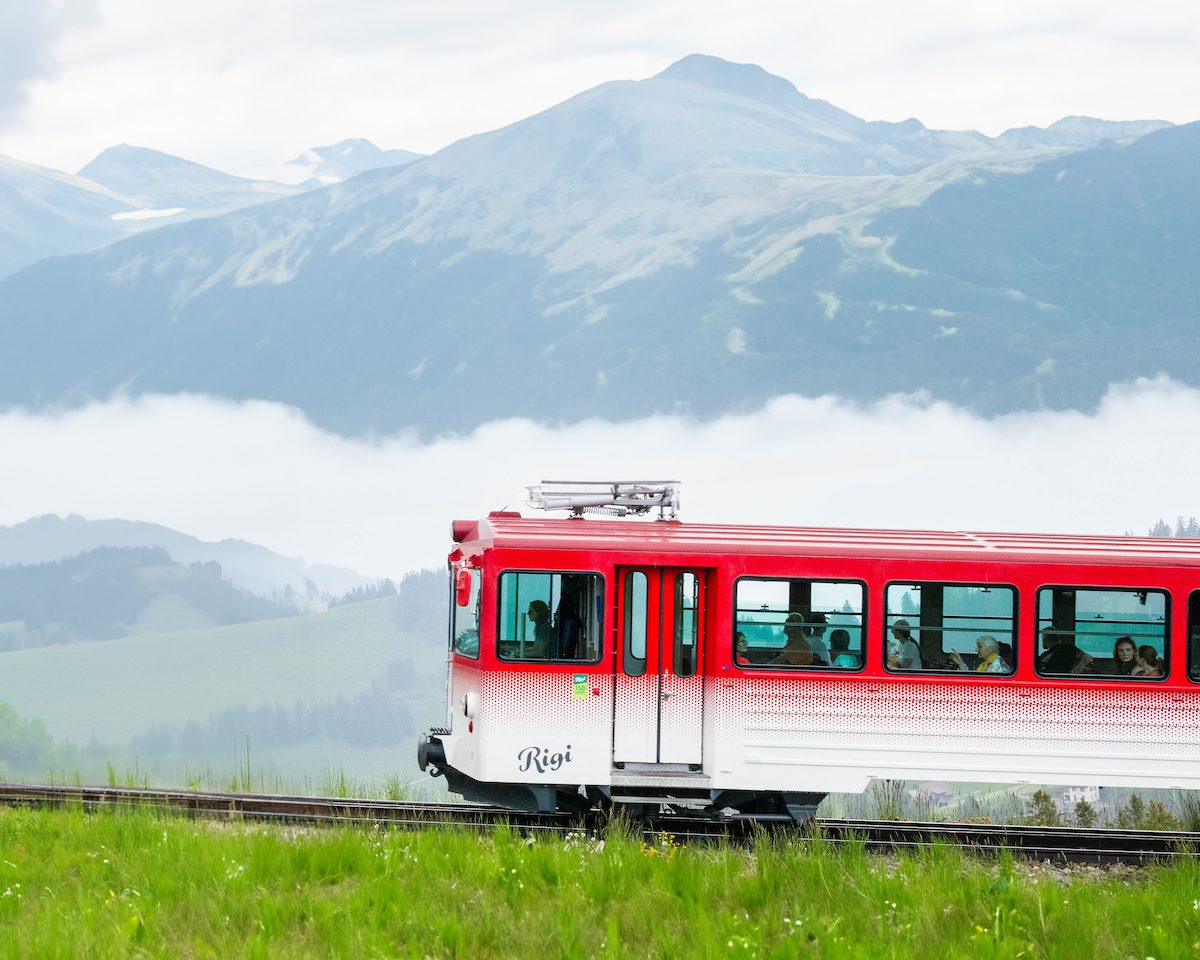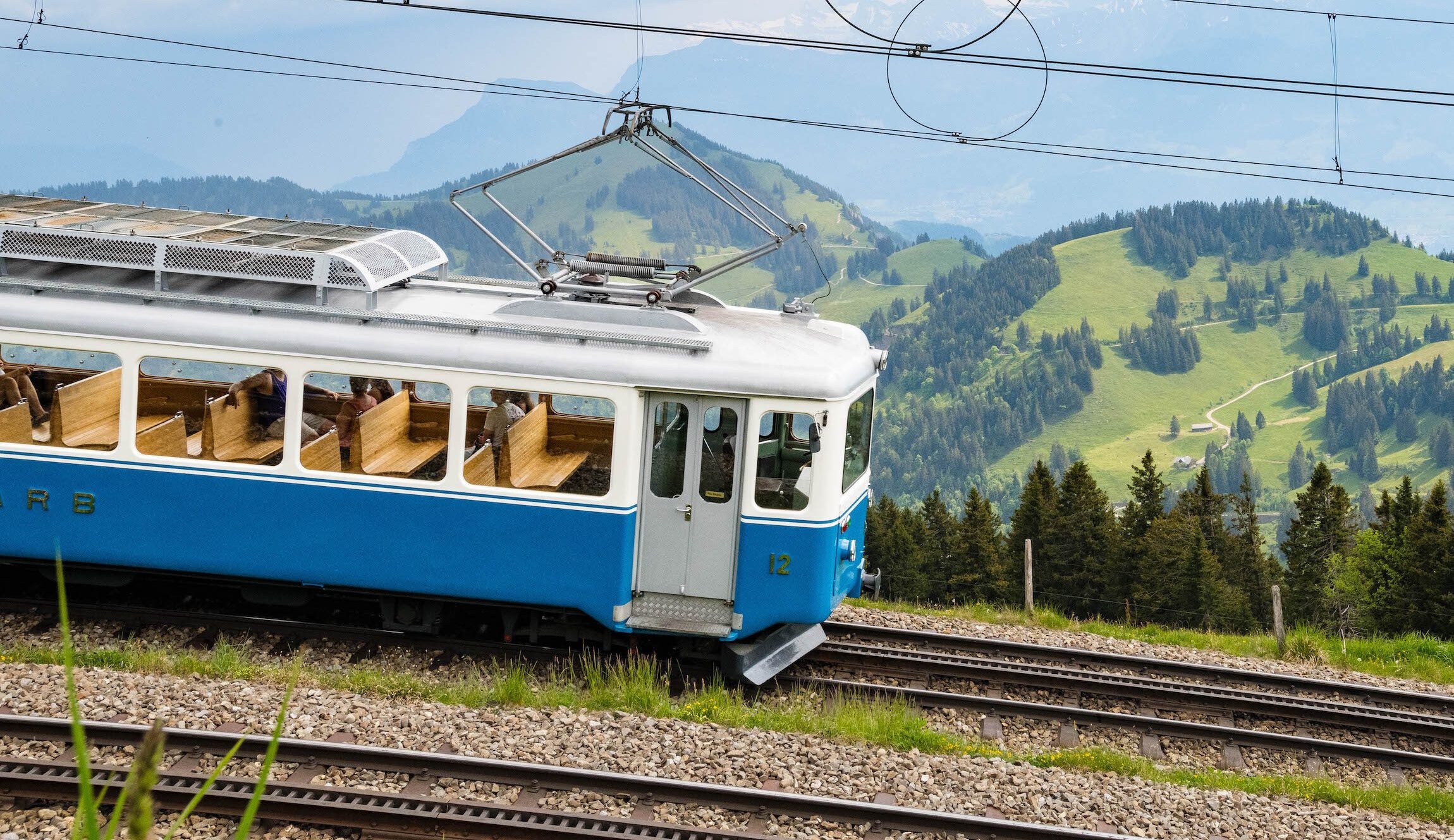Stepping off the Lake Lucerne boat into the port of Vitznau, one is immediately welcomed by the bright red train cars of the first cog railway in continental Europe. With laid track climbing all the way up to the summit of towering Mt. Rigi, the inventor behind this engineering feat took railroading to new heights.
With an affinity for the brand new locomotive technology sweeping the Western world, Swiss engineer Niklaus Riggenbach wished to bring more trains into his native country. With Switzerland’s mountainous landscape and high grades, however, regular railroading wouldn’t be possible. Patenting a new “toothed” rack rail system in France in 1863, Riggenbach invented a way for trains to move at a steep grade, with a cogwheel attached to the locomotive that would lock into the saw-shaped rail and thus prevent the train from sliding back down a mountain. Coincidentally, an independently conceived technology similar to Riggenbach’s design was being used for a railway in Mt. Washington, Vermont, and upon seeing its success himself in-person, Niklaus Riggenbach was even further determined to bring the technology into the Land of Milk and Honey.
Led by Riggenbach, plans were organized to build a cog railway up Mount Rigi–though not due to a similarity between the engineer’s and mountain’s names. Nicknamed “Queen of the Mountains,” Rigi’s peak offered striking views of three separate lakes below, and was home to a grand hotel offering views of rutilant rising suns. Completing the first stretch of the line in 1871, the railroad was opened to great fanfare, with Riggenbach himself driving the first locomotive up the rugged landscape. Upon its full completion, the railway would carry passengers to 5,748 ft above sea-level, becoming the highest standard-gauge railway in Europe.
Now over 150 years old, the Rigi Railway continues to carry passengers up and down the picturesque valleys and heights of its namesake mountain. Considered public transit, Swiss Travel Pass users and single-ticket commuters alike enjoy the serene surroundings as they venture onwards to the next town or chalet awaiting their arrival. Still using Riggenbach’s ingenious technology to ascend Mt. Rigi, one’s own cogs turn as to what could be invented next to climb the beloved mountain.


























 :
: 





